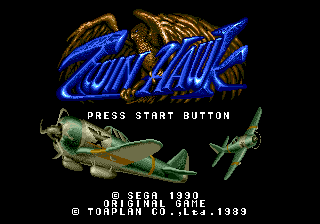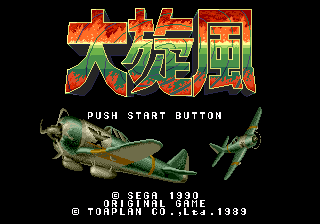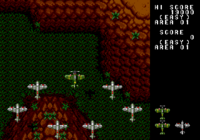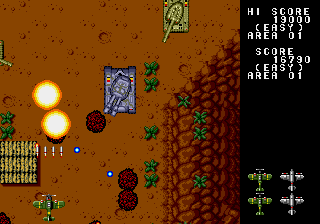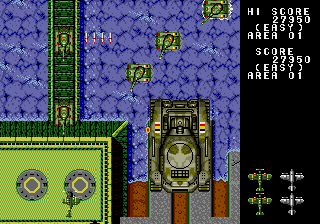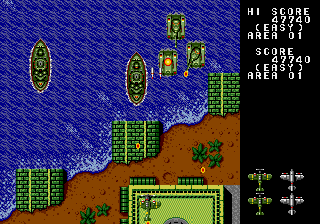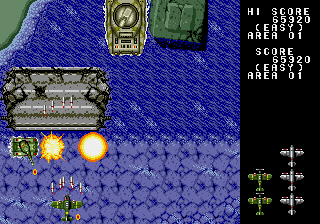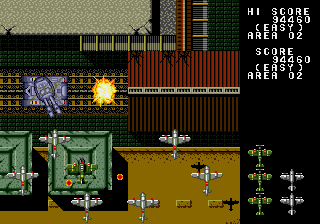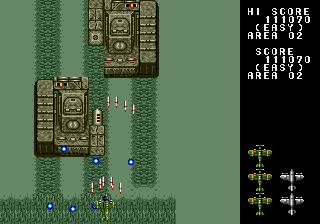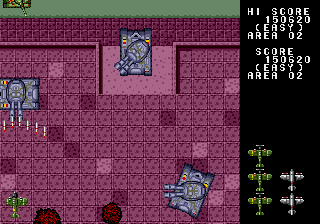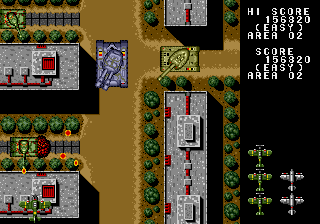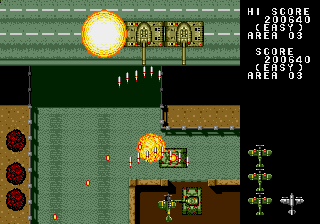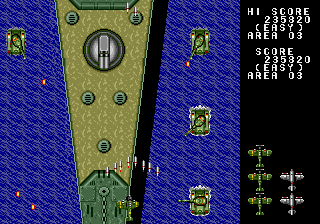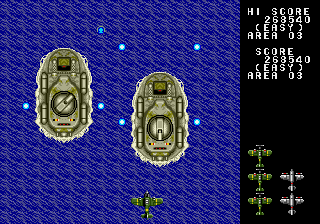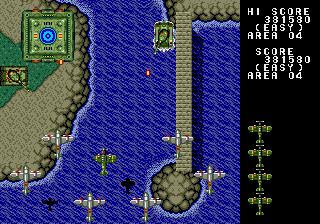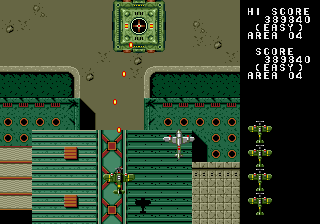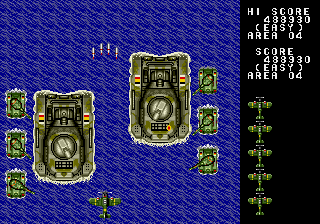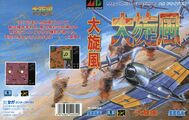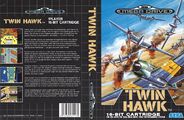Difference between revisions of "Twin Hawk"
From Sega Retro
m |
|||
| Line 21: | Line 21: | ||
| md_code_uk=1117<!--{{magref|SegaFromVirginJuly1991 DE Trade Price List.pdf|page=5}}--> | | md_code_uk=1117<!--{{magref|SegaFromVirginJuly1991 DE Trade Price List.pdf|page=5}}--> | ||
| md_rrp_uk=39.99{{magref|ace|36|57}}<!--34.99{{magref|segapower|17|44}}--> | | md_rrp_uk=39.99{{magref|ace|36|57}}<!--34.99{{magref|segapower|17|44}}--> | ||
| + | | md_date_pt=199x | ||
| md_date_au=199x | | md_date_au=199x | ||
| md_date_bx=199x | | md_date_bx=199x | ||
| Line 153: | Line 154: | ||
| item1=TwinHawk MD EU pcb.jpg | | item1=TwinHawk MD EU pcb.jpg | ||
| item1name=PCB | | item1name=PCB | ||
| + | }}{{Scanbox | ||
| + | | console=Mega Drive | ||
| + | | region=PT | ||
| + | | cover= | ||
| + | | cart= | ||
| + | | manual= | ||
}}{{Scanbox | }}{{Scanbox | ||
| console=Mega Drive | | console=Mega Drive | ||
Latest revision as of 07:08, 4 November 2024
| |||||||||||||||||||||||||||||||||||
| Twin Hawk | |||||||||||||||||||||||||||||||||||
|---|---|---|---|---|---|---|---|---|---|---|---|---|---|---|---|---|---|---|---|---|---|---|---|---|---|---|---|---|---|---|---|---|---|---|---|
| System(s): Sega Mega Drive | |||||||||||||||||||||||||||||||||||
| Publisher: Sega | |||||||||||||||||||||||||||||||||||
| Developer: Toaplan | |||||||||||||||||||||||||||||||||||
| Original system(s): Arcade boards | |||||||||||||||||||||||||||||||||||
| Genre: Shooting[1][2] | |||||||||||||||||||||||||||||||||||
| Number of players: 1 | |||||||||||||||||||||||||||||||||||
| |||||||||||||||||||||||||||||||||||
|
Twin Hawk, originally released in Japan as Daisenpuu (大旋風), is a 1989 arcade shoot-'em-up by Toaplan. It was ported to the Mega Drive by Sega in 1990, and released exclusively in Japan and Europe.
Some magazines incorrectly identified the game as Flying Shark or 1943. While Twin Hawk bears a resemblance to the former, Flying Shark was never released for a Sega system (though its sequel, Fire Shark, was ported to the Mega Drive).
Contents
Story
At the end of an alternate World War II, a new European country is formed called Gorongo. General Giovanni of the Gorongo military was infuriated with the results of the war and what it meant to the country of Gorongo, initiating a rebellion against the country's government that was widely followed by his soldiers. Holing themselves up on Bobo Island, south of Gorongo, Giovanni declared the occupation as the independent state of Fuangania and plotted to take over Gorongo. After taking over the town of Kusunoki, the Fuangania invasion, consisting of massive ground and sea attack forces, started to spread. Gorongo President Bratt ordered a counterattack that focused on the one type of firepower Giovanni lacked: an air force. The special air force "Daisenpuu" sets up a mountain base after spotting a secret Fuangania fortress under construction. However, nearing the end of their training, the air force is spotted by the Fuangania and are preparing to attack. It is up to the player, in the role of a wing commander, to fly into Giovanni's secret base and take him and his commanding unit out.
Gameplay
The game is a vertically scrolling shoot-'em-up. There are only land and sea enemies to be fought, with no aerial targets to be found. Enemies are mostly tanks and can enter the playfield from any side. Unusually, there are no breaks in the gameplay, with the entire game playing as essentially one endless stage. The player controls a World War II-era propeller plane and fights an assortment of military enemy forces like tanks, battleships, and artillery.
The plane moves in any direction with the D-Pad. It shoots its guns with ![]() or
or ![]() , which can be held for rapid-fire. There is a "Rapid" option that increases the rate of fire. The plane's guns can be upgraded to shoot more streams in parallel by collecting power-ups. The player can call in a squadron of six white helper planes that shoot with the player and dive-bomb the nearest enemy when shot down. This can be done two times per life. The helper planes fly in a fixed formation but shift left or right with the player's plane. The player can summon the helper planes with
, which can be held for rapid-fire. There is a "Rapid" option that increases the rate of fire. The plane's guns can be upgraded to shoot more streams in parallel by collecting power-ups. The player can call in a squadron of six white helper planes that shoot with the player and dive-bomb the nearest enemy when shot down. This can be done two times per life. The helper planes fly in a fixed formation but shift left or right with the player's plane. The player can summon the helper planes with ![]() . Pressing
. Pressing ![]() again before the planes are in formation trades the planes for a large bomb attack. Pressing
again before the planes are in formation trades the planes for a large bomb attack. Pressing ![]() again after the planes are in formation orders all of the helper planes to dive-bomb the nearest enemies.
again after the planes are in formation orders all of the helper planes to dive-bomb the nearest enemies.
The plane is destroyed if it is hit by enemy fire, respawning at a predetermined checkpoint with its weapon at baseline strength and with two formation calls. Because none of the enemies are flying, the player's plane flies over them instead of colliding with them. If any helper planes are out when the player's plane is destroyed, they dive-bomb any nearby enemies. The game ends if the player runs out of lives. There are no continues. The player earns an extra life at 70,000 points and then every 200,000 points after that. There are two selectable difficulty levels (Easy and Hard).
After completing the last stage, as with other Toaplan shoot-'em-up games, the game loops over again from the beginning, with the difficulty increasing.
Items
Items appear when the player destroys friendly trucks or boats. The color of the truck or boat indicates the item that is dropped. Items bounce around the screen until collected or until the screen scrolls past them.
| Orange Truck or Boat | |
|---|---|
| Orange trucks and boats release the P item, which increases the firepower of the plane's guns, up to 3 times. Each upgrade adds another two streams of bullets. | |
| White Truck or Boat | |
| White trucks and boats release the H item, which gives the player another use of the helper planes. | |
| Blue Truck or Boat | |
| Blue trucks and boats release the 1 Up item, which gives the player an extra life. | |
| Green Truck or Boat | |
| Green trucks and boats do not release an item but award 1,000 bonus points when destroyed. |
Areas
Though the game is presented as one uninterrupted stage, it is divided into four large areas, punctuated by a change in music and indicated in the status area on the right side of the screen.
| Area 1 | |
|---|---|
| Area 2 | |
| Area 3 | |
| Area 4 | |
Versions
Like many of the Mega Drive Toaplan ports, a single cart with multiple regional versions was made for all releases of the game, and these can be switched between simply by playing the cart on a particular regional model or by using Game Genie or similar. Attempting to play the cart on an American console triggers the slightly easier Twin Hawk version.
Localised names
| Language | Localised Name | English Translation |
|---|---|---|
| English | Twin Hawk | Twin Hawk |
| Japanese | 大旋風 | Daisenpuu |
Magazine articles
- Main article: Twin Hawk/Magazine articles.
Promotional material
Physical scans
| Sega Retro Average | ||||||||||||||||||||||||||||||||||||||||||||||||||||||||||||||||||||||||||||||||||||||||||||||||||||||||||||||||||||||||||||||||||||||||||||||||
|---|---|---|---|---|---|---|---|---|---|---|---|---|---|---|---|---|---|---|---|---|---|---|---|---|---|---|---|---|---|---|---|---|---|---|---|---|---|---|---|---|---|---|---|---|---|---|---|---|---|---|---|---|---|---|---|---|---|---|---|---|---|---|---|---|---|---|---|---|---|---|---|---|---|---|---|---|---|---|---|---|---|---|---|---|---|---|---|---|---|---|---|---|---|---|---|---|---|---|---|---|---|---|---|---|---|---|---|---|---|---|---|---|---|---|---|---|---|---|---|---|---|---|---|---|---|---|---|---|---|---|---|---|---|---|---|---|---|---|---|---|---|---|---|---|
|
| 67 | |
|---|---|
| Based on 28 reviews | |
| Mega Drive, PT |
|---|
|
| Mega Drive, BX† |
|---|
|
| Mega Drive, AU |
|---|
|
Technical information
- Main article: Twin Hawk/Technical information.
References
NEC Retro has more information related to Daisenpuu
|
- ↑ File:TwinHawk MD JP Box.jpg
- ↑ 2.0 2.1 https://sega.jp/history/hard/megadrive/software.html (Wayback Machine: 2020-07-20 09:51)
- ↑ ACE, "September 1990" (UK; 1990-08-03), page 57
- ↑ ACE, "September 1990" (UK; 1990-08-03), page 56
- ↑ Beep! MegaDrive, "July 1990" (JP; 1990-06-08), page 17
- ↑ (UK) (+0:00)
- ↑ Complete Guide to Consoles, "Volume III" (UK; 1990-08-xx), page 36
- ↑ Complete Guide to Consoles, "Volume IV" (UK; 1990-11-xx), page 29
- ↑ The Complete Guide to Sega, "" (UK; 1991-05-xx), page 46
- ↑ Console XS, "June/July 1992" (UK; 1992-04-23), page 135
- ↑ Famitsu, "" (JP; 1990-0x-xx), page 1
- ↑ The Games Machine, "September 1990" (UK; 1990-08-xx), page 60
- ↑ Famicom Hisshoubon, "1990-13 (1990-07-06)" (JP; 1990-06-15), page 13
- ↑ Joypad, "Mars 1992" (FR; 1992-02-1x), page 142
- ↑ Joystick, "Septembre 1990" (FR; 1990-0x-xx), page 89
- ↑ Sega Mega Drive Advanced Gaming, "January 1993" (UK; 199x-xx-xx), page 90
- ↑ Sega Mega Drive Advanced Gaming, "January 1993" (UK; 199x-xx-xx), page 95
- ↑ Mega Drive Fan, "October 1990" (JP; 1990-09-08), page 79
- ↑ MegaTech, "Xmas 1991" (UK; 1991-12-06), page 78
- ↑ MegaTech, "Xmas 1991" (UK; 1991-12-06), page 81
- ↑ Micromanía (segunda época), "Abril 1991" (ES; 1991-0x-xx), page 44
- ↑ Mean Machines Sega, "October 1992" (UK; 1992-09-xx), page 138
- ↑ Raze, "April 1991" (UK; 1991-02-28), page 44
- ↑ Sega Power, "April 1991" (UK; 1991-03-07), page 44
- ↑ Sega Power, "October 1991" (UK; 1991-09-05), page 52
- ↑ Sega Power, "October 1991" (UK; 1991-09-05), page 55
- ↑ Sega Pro, "April 1993" (UK; 1993-03-11), page 64
- ↑ Sega Pro, "April 1993" (UK; 1993-03-11), page 68
- ↑ Sega Saturn Magazine, "September 1995" (JP; 1995-08-08), page 87
- ↑ Super Gaming, "Fall 1991" (US; 1991-xx-xx), page 11
- ↑ Tilt, "Septembre 1990" (FR; 1990-0x-xx), page 87
| Twin Hawk | |
|---|---|
|
Main page | Comparisons | Hidden content | Magazine articles | Video coverage | Reception | Region coding | Technical information | Bootlegs
Prototypes: 1990-04-06
| |
- 1 player games
- JP Mega Drive games
- All JP games
- EU Mega Drive games
- All EU games
- BX Mega Drive games
- All BX games
- PT Mega Drive games
- All PT games
- UK Mega Drive games
- All UK games
- AU Mega Drive games
- All AU games
- Mega Drive games
- 1990 Mega Drive games
- All 1990 games
- Mega Drive shoot-'em-up games
- All shoot-'em-up games
- All games
- Bad translation
- Twin Hawk
